Nestled amidst the rugged Himalayan ranges, Upper Mustang beckons adventurous trekkers to uncover its enigmatic allure. This restricted region, once a forbidden kingdom, boasts a captivating blend of ancient Tibetan culture, mystical landscapes, and breathtaking vistas. From the walled city of Lo Manthang to the remote villages and ancient monasteries, the trek through Upper Mustang promises an immersive journey into a world where time seems to have stood still. Trekkers will be captivated by the vibrant canyons, spiritual traditions, and the opportunity to witness the unique heritage of this intriguing destination. Unraveling the secrets of Upper Mustang is a quest worth undertaking for those seeking a truly transformative experience.
Key Points
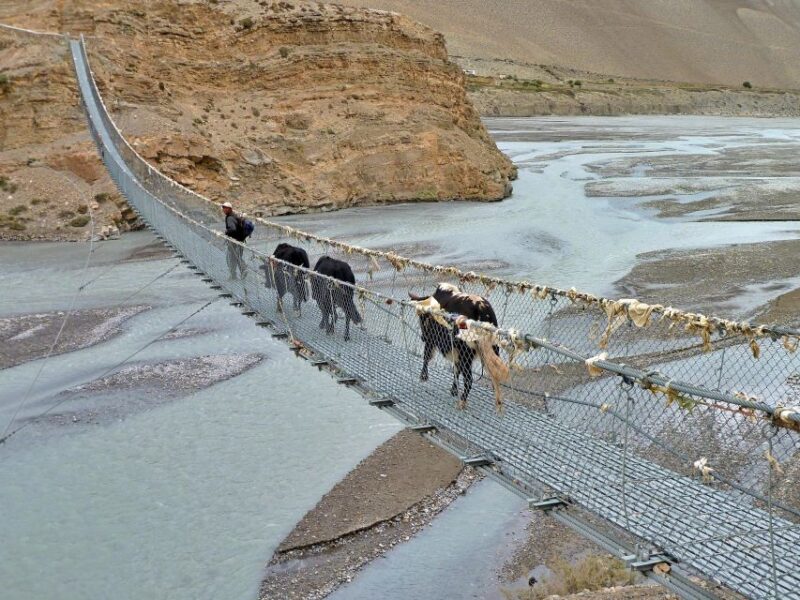
- The Upper Mustang trek offers a unique culture in the ancient Tibetan Buddhist heritage, including well-preserved monasteries and the walled capital of Lo Manthang.
- The trek provides breathtaking views of the Himalayan peaks and landscapes, showcasing the rugged beauty of Nepal’s high desert region.
- Restricted access to the region since 1992 enhances the adventurous spirit and exclusivity of the trek, requiring special permits for trekkers.
- Trekkers can witness local festivals, masked dances, and ceremonies that celebrate the rich Tibetan Buddhist traditions, offering profound insights into the local way of life.
- The trek package includes essential services such as flights, transportation, accommodation, and meals, ensuring a hassle-free experience for culture.
Trek Highlights
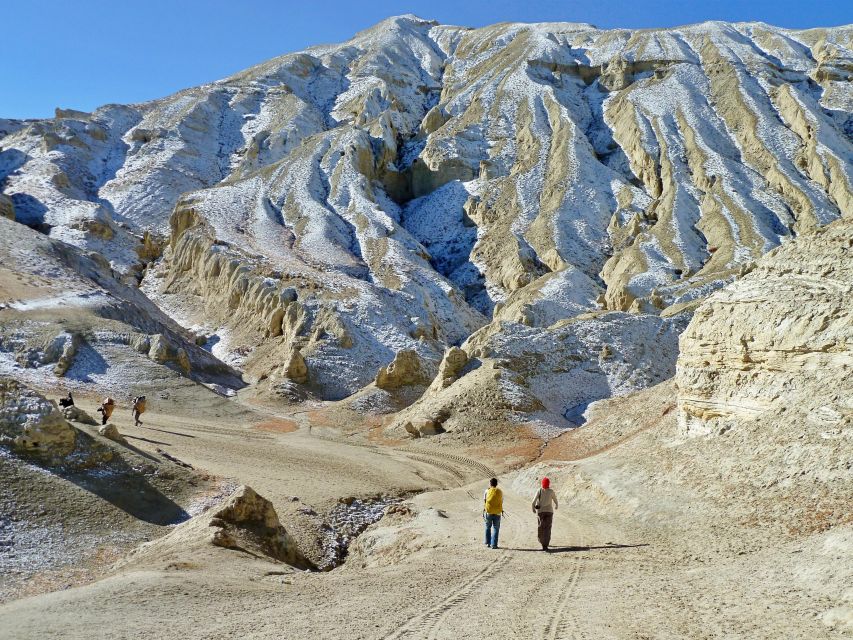
The Upper Mustang Trek often captivates travelers with its ancient Tibetan culture, mystical landscapes, and hidden cave dwellings.
Trekkers can explore well-preserved Tibetan Buddhist monasteries, traditional villages, and the walled capital of Lo Manthang, while taking in breathtaking views of the Himalayas and deep canyons.
The restricted nature of the region, accessible only with a special permit since 1992, adds an adventurous spirit to the journey.
Highlights include witnessing preserved Tibetan Buddhist traditions, attending monastic festivals, and immersing oneself in the eroded, colorful cliffs and panoramic vistas of snow-capped peaks that define this high desert landscape in Nepal’s remote northern frontier.
Ready to hit more trails? More hiking adventures we feature in Ghami
Itinerary Overview
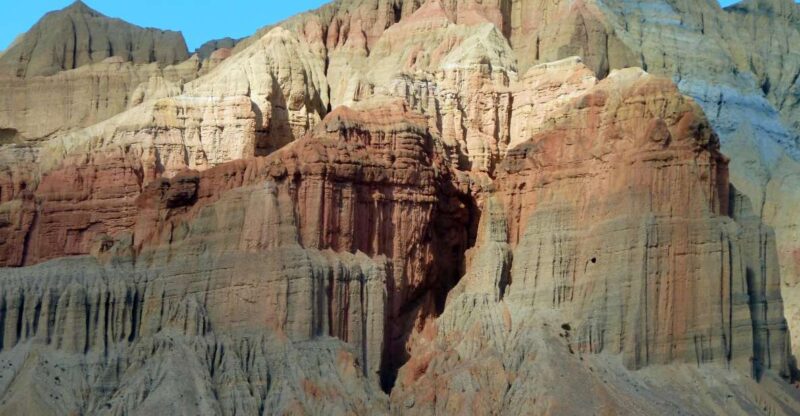
The Upper Mustang Trek unfolds over 16 days, commencing with arrival in Kathmandu and concluding with the return to the capital.
After exploring UNESCO-listed sites in Kathmandu, participants fly to Jomsom and trek through a series of villages, including Kagbeni, Chele, Syangboche, Ghami, Charang, Lo Manthang, Drakmar, Ghiling, and Chhuksang.
Along the way, trekkers witness preserved Tibetan Buddhist traditions, explore ancient monasteries and the royal palace of the forbidden kingdom of Lo Manthang, and marvel at the region’s eroded canyons, colorful cliffs, and panoramic views of snow-capped peaks.
The trek offers a unique and restricted adventure in Nepal’s high desert.
Exploring Lo Manthang
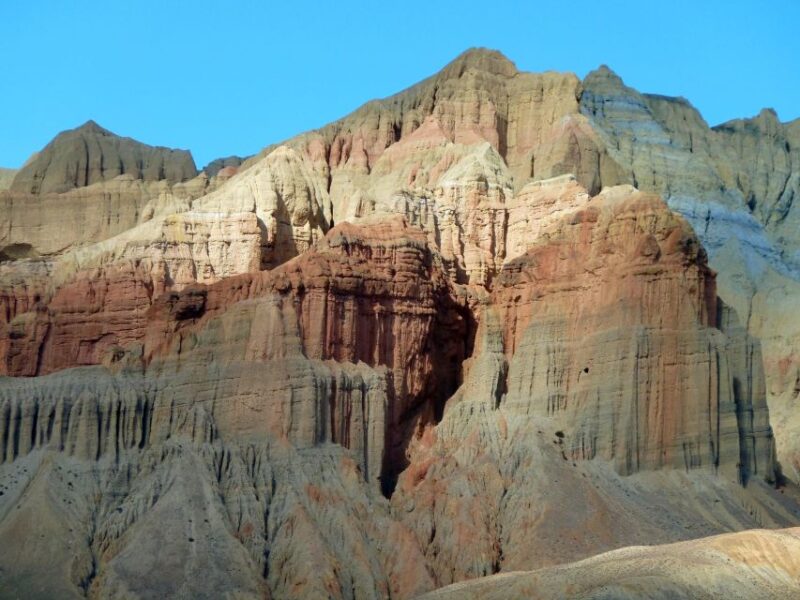
As the final destination of the Upper Mustang Trek, Lo Manthang captivates visitors with its ancient monasteries, the imposing royal palace, and the unique architectural style that has remained largely unchanged for centuries. The walled city serves as the cultural and spiritual heart of this isolated region, where Tibetan Buddhist traditions thrive. Exploring Lo Manthang is like stepping back in time, where every corner reveals a new treasure – from the intricate wall murals in the monasteries to the colorful prayer flags fluttering in the mountain breeze. The city’s strategic location along ancient trade routes has left an indelible mark on its history and way of life, making it a must-see highlight of the Upper Mustang Trek.
| Key Features of Lo Manthang | |
|---|---|
| Ancient Monasteries | Preserving Tibetan Buddhist heritage |
| Royal Palace | Seat of traditional Mustang rulers |
| Unique Architecture | Centuries-old buildings and structures |
| Strategic Location | Along historic trade routes |
Tibetan Buddhist Traditions
Permeating the remote reaches of Upper Mustang, Tibetan Buddhist traditions have endured for centuries, shaping the region’s spiritual identity and cultural practices.
Monasteries like Thubchen and Namgyal serve as havens for devoted monks, where ancient rituals, scriptural studies, and meditative disciplines are diligently upheld.
Local festivals, such as the Tiji ritual, draw pilgrims from across the Himalayan landscape, as they gather to witness centuries-old masked dances and ceremonies that celebrate the area’s deep-rooted connection to Tibetan Buddhism.
These timeless traditions not only infuse the landscape with a sacred energy but also offer visitors a profound glimpse into the rich cultural heritage that has long defined this isolated corner of Nepal.
More Great Tours NearbyBreathtaking Landscapes
Amidst the remote reaches of Upper Mustang, trekkers are treated to a tapestry of breathtaking landscapes that captivate the senses.
From the towering, snow-capped peaks of the Himalayas to the deeply carved, rust-colored canyons that carve through the high-altitude desert terrain, panoramic views of these majestic mountains dominate the horizon.
Their jagged ridges reach towards the heavens, creating a dramatic backdrop for the journey.
Underfoot, the terrain transforms into a lunar-like landscape, with eroded cliffs and ravines in shades of ochre, sienna, and indigo.
Traversing these rugged trails, trekkers witness firsthand the raw, untamed beauty of this hidden corner of Nepal, offering a true feast for the eyes and the soul.
Restricted Access and Permits
The restricted access to Upper Mustang imposes specific permit requirements for trekkers, underscoring the delicate nature of this high-altitude desert region.
Since 1992, Nepal’s government has closely regulated entry to the area, granting special permits to control tourism and protect the fragile Tibetan Buddhist culture and environment.
Trekkers must obtain a restricted area permit, which costs $500 per person for a minimum group size of two. Securing the permit can take several weeks, so careful planning is essential.
Once granted, the permit allows access to the walled city of Lo Manthang and other ancient monasteries and villages.
This controlled entry preserves Upper Mustang’s unique heritage while offering adventurous travelers a chance to explore this hidden Himalayan kingdom.
Services and Inclusions
The Upper Mustang Trek package includes a flight ticket from Jomsom to Pokhara, all necessary transportation, an English-speaking guide and porter to carry bags, twin-sharing accommodation in standard tea houses, and all meals – breakfast, lunch, and dinner.
The permits required for trekking in this restricted area are also included. Travelers don’t have to worry about booking these services separately as they’re bundled into the package.
This comprehensive offering ensures a hassle-free experience, allowing trekkers to fully enjoy the journey and explore the ancient Tibetan culture, mystical landscapes, and hidden cave dwellings of Upper Mustang.
All the essential logistics are handled, so adventurers can focus on creating unforgettable memories.
Additional Information
Travelers have the flexibility to cancel their Upper Mustang Trek booking and receive a full refund if they do so 24 hours in advance.
The trek also offers a convenient ‘reserve now, pay later’ option, allowing adventurers to secure their spot without immediate payment.
However, personal adventure gear like sleeping bags, trekking poles, and thermal wear aren’t included in the package – these must be provided by the trekkers themselves.
Plus, costs for drinks, laundry, tips, and entry fees to local sites aren’t covered and will need to be paid separately during the trek.
While the package includes core services, travelers should be prepared to cover additional expenses for a seamless and enjoyable journey through the forbidden kingdom of Upper Mustang.
Frequently Asked Questions
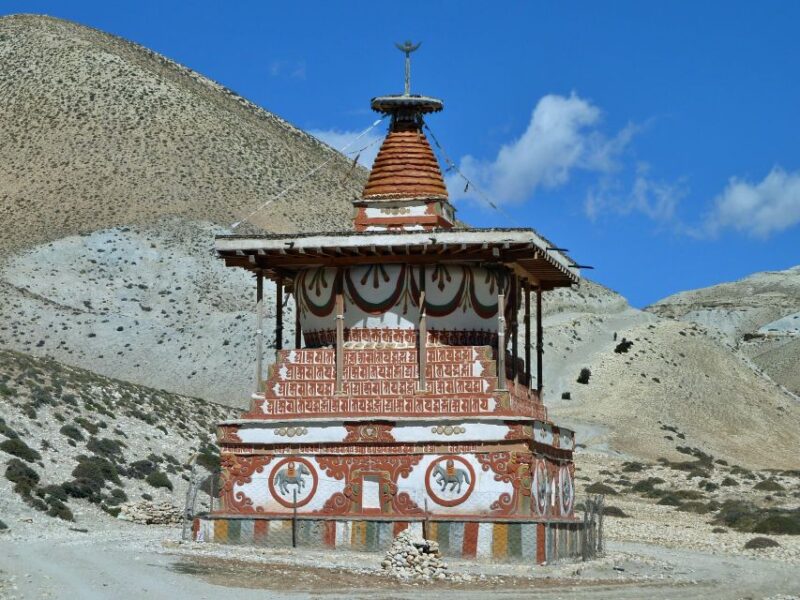
What Is the Best Season to Undertake the Upper Mustang Trek?
The best season to undertake the Upper Mustang Trek is during the spring (March to May) and autumn (September to November) when the weather’s mild, skies are clear, and trekkers can enjoy the stunning Himalayan vistas and cultural experiences.
Can I Bring My Own Trekking Equipment, or Is It Provided?
Trekkers can bring their own personal trekking equipment, as it’s not provided. However, the trek operator can assist with arranging and renting any necessary gear. This allows trekkers to customize their equipment to their preferences and needs.
Is There a Minimum Group Size Requirement for This Trek?
The trek doesn’t have a minimum group size requirement. Travelers can join as individuals or in small groups. The tour operator provides all necessary equipment and arrangements to accommodate both solo and group bookings.
What Is the Altitude Acclimatization Process During the Trek?
The trek follows a gradual ascent, allowing trekkers to acclimate progressively. Days are spent at lower altitudes, with periodic rest days to adjust. This structured approach helps minimize altitude-related issues and ensures a safe and enjoyable experience.
Are There Any Additional Visas or Permits Required for This Trek?
Yes, additional permits are required for this trek. Trekkers need a special permit to enter the restricted Upper Mustang region, which costs around $500 USD per person. The permit must be obtained prior to the trek.
Recap
Upper Mustang’s trek offers an unparalleled adventure into a hidden Tibetan realm.
Trekkers traverse ancient villages, discover sacred monasteries, and witness the region’s breathtaking landscapes.
While access is restricted, the journey unveils the remarkable cultural heritage and spiritual traditions that have endured for centuries in this remote Nepalese enclave.
It’s an unforgettable experience that immerses adventurers in the captivating allure of the ‘Forbidden Kingdom.’
You can check availability for your dates here: